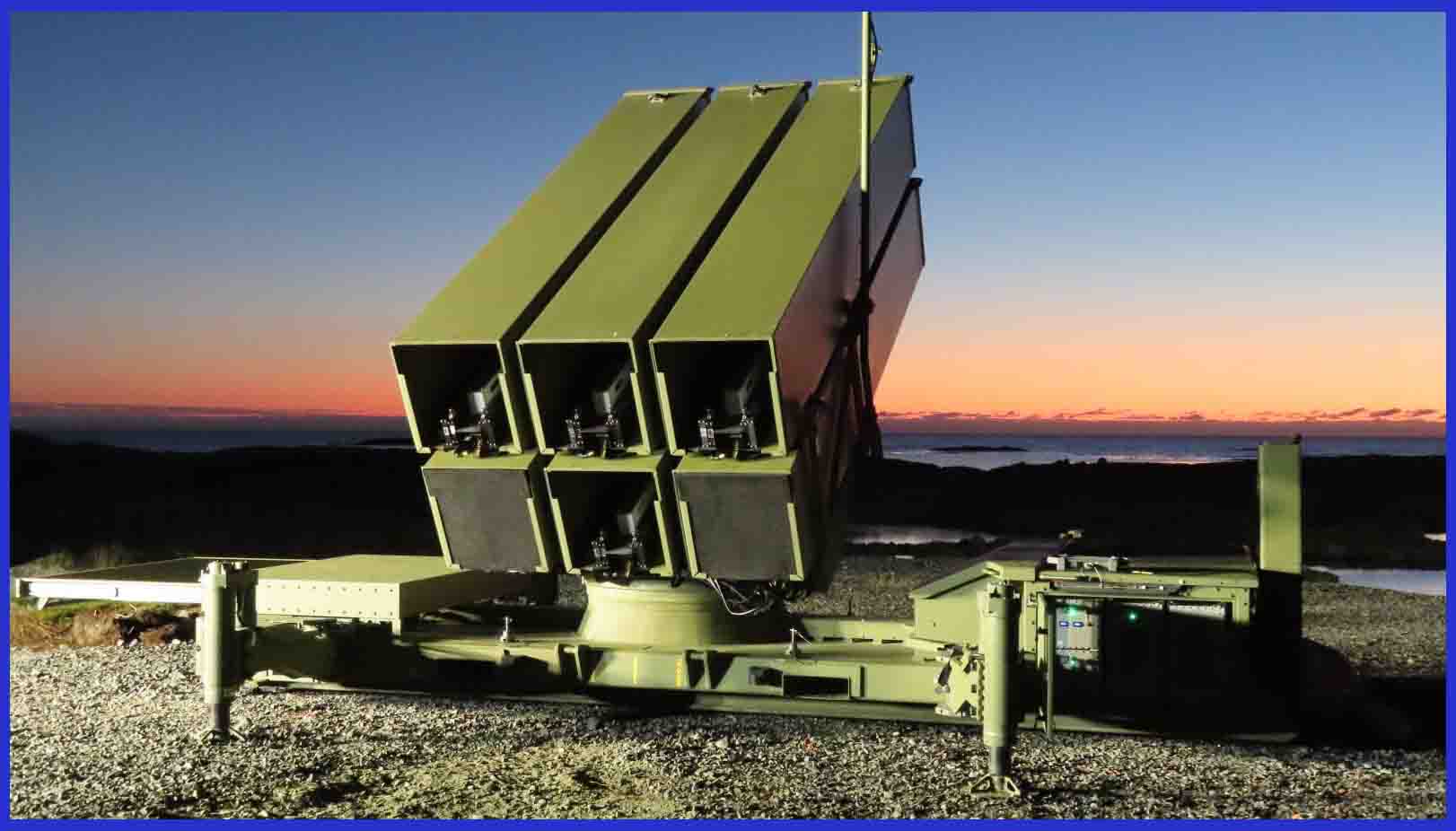Modern defence systems are essential in today’s ever-evolving security landscape. Among these, the NASAMS System stands out as a formidable choice. Let’s Unveil The Best Of The NASAMS Missile System, which is renowned for its modular design, allowing seamless integration with various launchers, radar systems, and missile types to meet diverse operational requirements. It excels in engaging threats within and beyond visual range, including aircraft, helicopters, drones, and cruise missiles, making it a versatile solution for safeguarding critical assets. It can be quickly repositioned with the help of the High Mobility Launcher (HML) or military all-terrain trucks in areas where the situation demands.

The National ( or Norwegian ) Advanced Surface-to-Air Missile System (NASAMS) stands as a cutting-edge ground-based air defence system, jointly developed by Raytheon and Kongsberg Defense & Aerospace (KDA). NASAMS made a significant breakthrough by becoming the pioneering platform for the surface-launched AIM-120 AMRAAM (Advanced Medium Range Air-to-Air Missile), which was commissioned into service in 1998. Subsequently, the evolution continued with the production of NASAMS 2, an enhanced version of the system equipped with Link 16 compatibility, and it has been in operational use since 2007.
As of the current year, 2022, NASAMS 3 represents the most recent advancement, having been deployed in 2019. This iteration introduces the capability to launch AIM-9X Sidewinder, IRIS-T SLS, and AMRAAM-ER missiles, along with the introduction of mobile air-liftable launchers. These launchers can be efficiently transported by air, utilizing C-130 Hercules or C-17 Globemaster aircraft for swift deployments. Furthermore, NASAMS has exhibited its interoperability with longer-range systems such as Patriot.
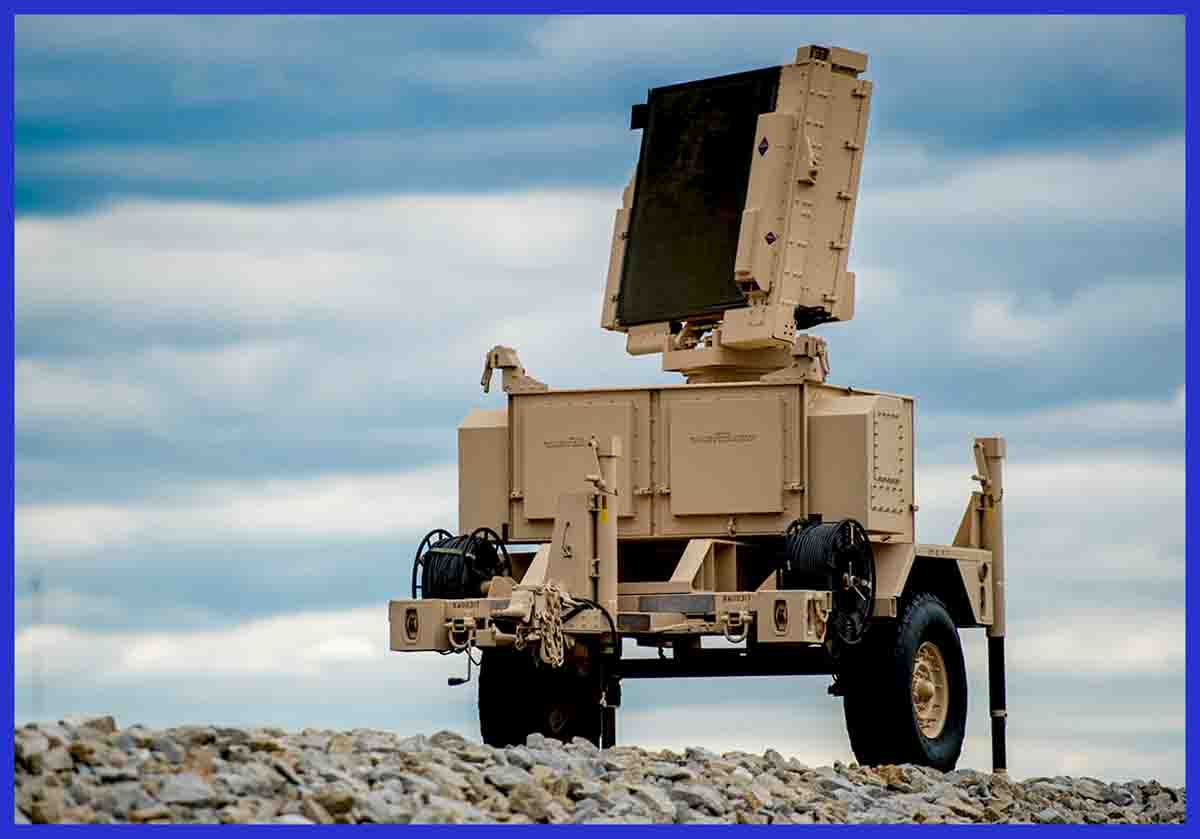
With advanced radar systems like the AN/MPQ-64F1 Sentinel, NASAMS offers precise target tracking and identification in complex environments. It operates in a network-centric ecosystem, enhancing situational awareness and enabling cooperation with other air defence assets. NASAMS is highly mobile, facilitating rapid deployment and repositioning, while its interoperability with NATO systems encourages international collaboration. With a proven operational record and continuous upgrades, NASAMS stands as a cost-effective, adaptable, and formidable air defence system for nations worldwide.
The NASAMS Missile System: A Journey of Development
The 1980s saw the beginning of NASAMS development when Kongsberg Defence & Aerospace (KDA) collaborated with Hughes Missile Systems and Hughes Aircraft Ground Systems Group to launch the program for the Royal Norwegian Air Force (RNoAF). According to the initial plan, NASAMS was intended to replace two existing defences at Norway’s air bases, where it would operate alongside F-16s to provide a layered defence.
During that time, the Norwegian Adapted Hawk (NOAH) program, an upgrade to the outdated MIM-23B Improved Hawk semi-active radar homing surface-to-air missile system, first developed an integrated air defence battle management command and control system. This system was based on KS500F computers and the KMC9000 control console with two colour CRT displays. The command and control system combined AN/TPQ-36 counter-battery radar with an existing AN/MPQ-46 High Power Illuminator Doppler Radar (HPIR) to create a three-dimensional low-altitude airspace monitoring radar.
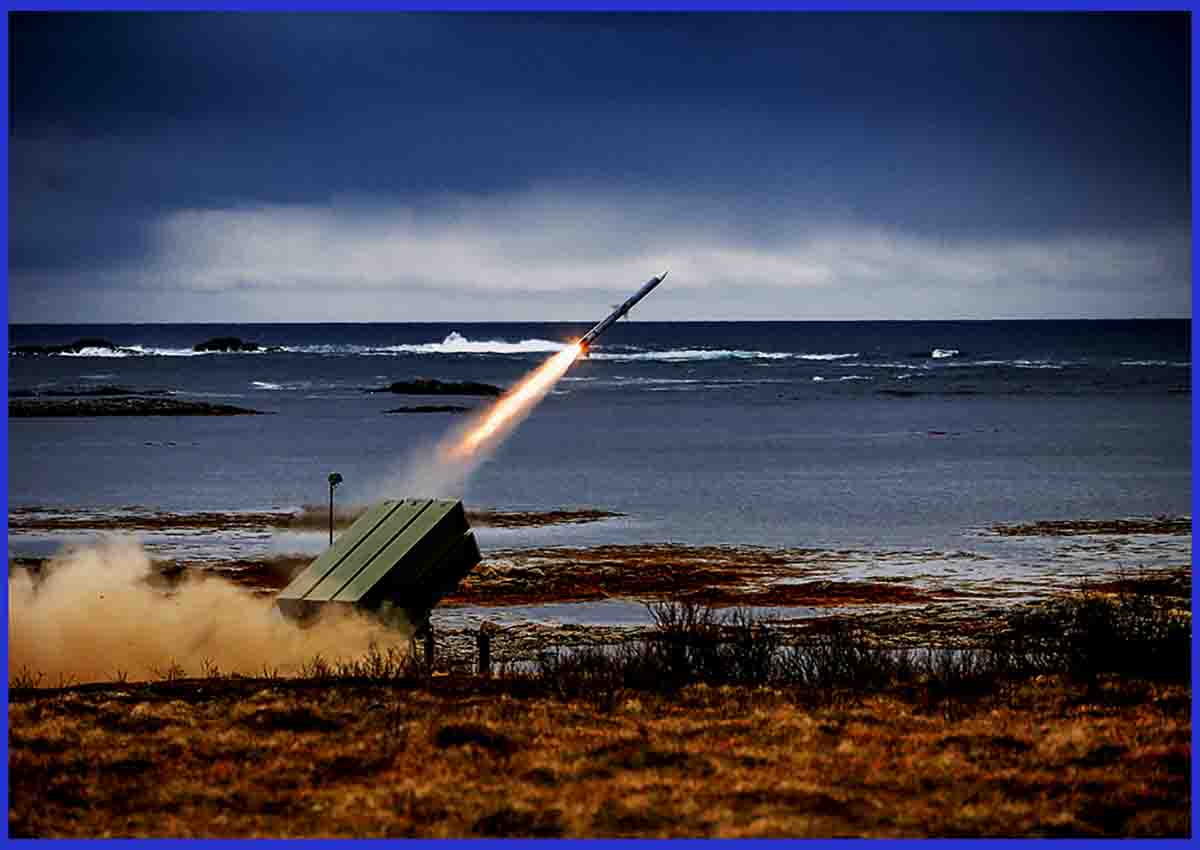
However, that level of enhanced NOAH would still only engage one target per launching pad, which was not enough to deter the looming danger of widespread cruise missile attacks. Therefore, the Royal Norwegian Air Force (RNoAF) ordered the continuation of the development of a distributed, network-centric, and multi-launcher air defence system.
To tackle these difficulties, the team replaced the MIM-23B Improved Hawk with the AIM-120 AMRAAM missile, referred to as NASAMS, which incorporates an inertial navigation system during its initial approach. Additionally, they upgraded the TPQ-36A radar to the rotating AN/MPQ-64 Sentinel configuration. Comprehensive testing of the system, including test launches, took place in June 1993. After a series of successful trials, the system attained its initial operational capability (IOC) between late 1994 and early 1995. Consequently, it became fully operational and was deployed starting in 1998.
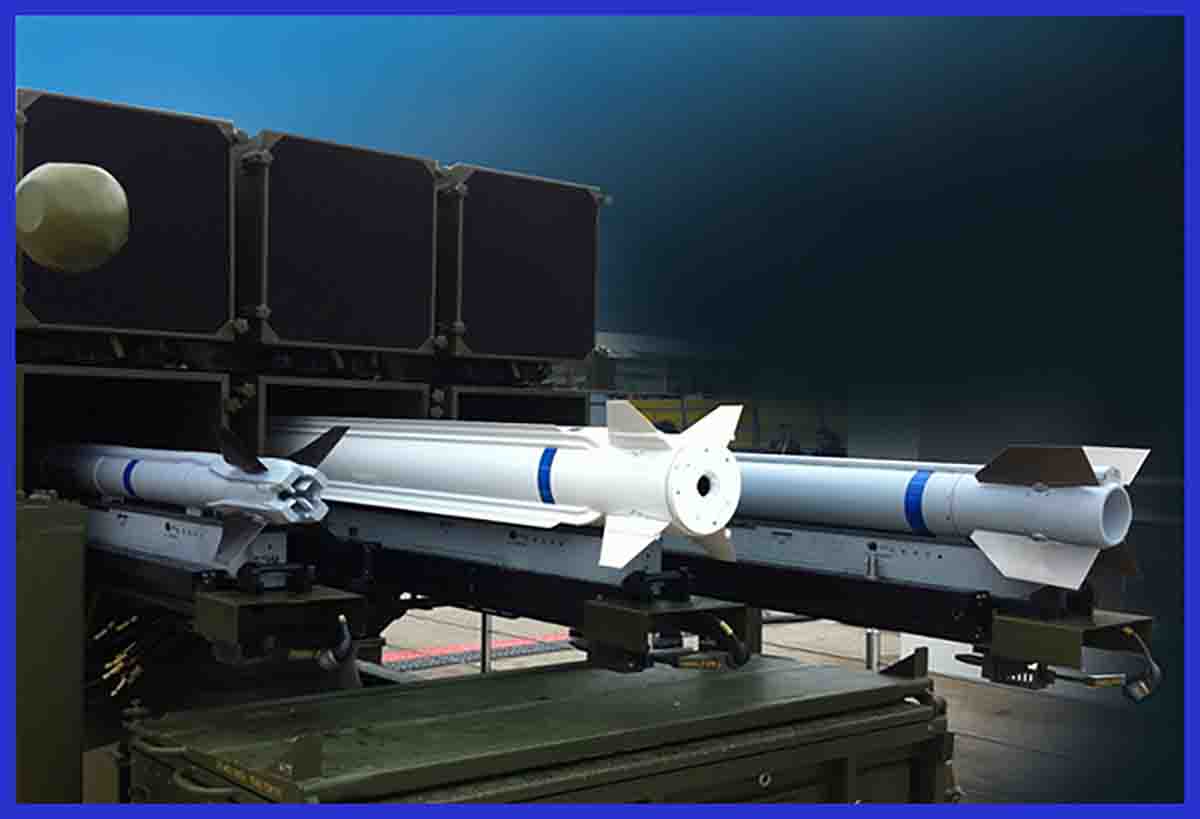
As of 2023, the NASAMS System Has Three Variants: 1st Gen NASAMS, NASAMS 2, and NASAMS 3
1st Gen NASAMS
The NASAMS system integrates a US-built TPQ-36A air defence X-band 3D radar and AMRAAM missiles, along with a Norwegian-developed battle management C4I (command, control, communication, computers, and intelligence) system known as the FDC (Fire Distribution Center). When connected to a radar, the FDC forms an “Acquisition Radar and Control System” (ARCS). The system’s networked and distributed nature enhances NASAMS capabilities. Within the shelter module, there are two identical consoles for the Tactical Control Officer (TCO) and the Tactical Control Assistant (TCA). The AMRAAM missile is launched from a towed launcher equipped with six missile canisters, and the standard AMRAAM missile boasts a horizontal range of up to 25 km.
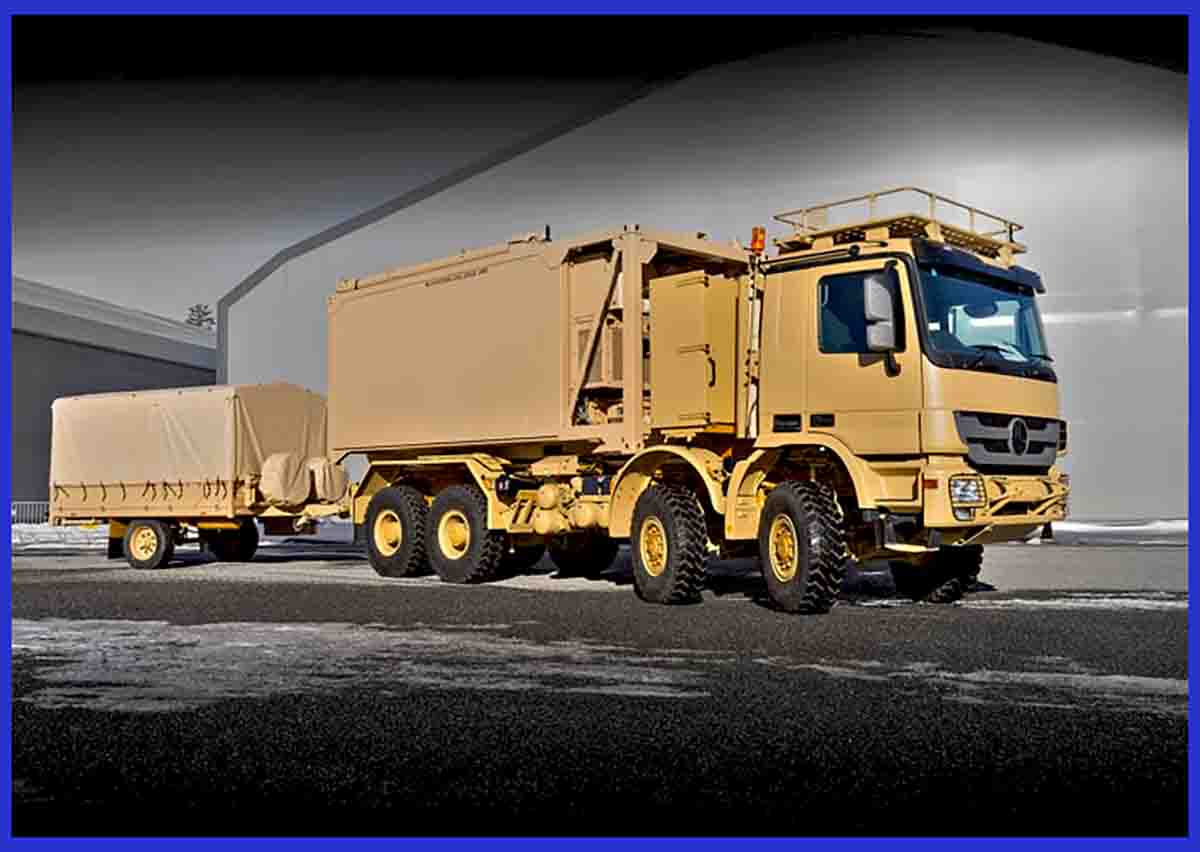
An Overview of NASAMS 2 SAM System
In the early 2000s, the Royal Norwegian Air Force (RNoAF) in collaboration with Kongsberg Defense & Aerospace (KDA) initiated a mid-life update for NASAMS, referred to as NASAMS 2. This enhanced version was officially delivered to the RNoAF in mid-2006. The primary distinction between the two iterations lies in the incorporation of standard tactical data links, including Link 16, Link 11, and JREAP (Joint Range Extension Applications Protocol), along with improvements to the ground radar system.
A full NASAMS 2 battery comprises as many as four firing units, with each firing unit being equipped with 3 missile launchers (LCHR), each capable of carrying six AIM-120 AMRAAM missiles. Additionally, a firing unit includes one AN/MPQ-64F1 Improved Sentinel radar, one Fire Distribution Center vehicle, and one electro-optical camera vehicle (MSP500). The Improved Sentinel radar boasts a wider frequency spectrum, variable rotation speed, and an increased capability to detect and track targets. This radar platform is transported on a trailer with its own power supply, making it towable by various types of vehicles.
Its modular design, allows customization and integration with various sensors and launchers to meet specific operational requirements. The newly updated lightweight version of the MSP600 electro-optical sensor from Rheinmetall is equipped with a laser rangefinder, a TV camera, and an upgraded thermographic camera. These components can be used for passive missile firing, a capability that has been successfully tested.
Overall, NASAMS 2 is highly mobile, with transportable launchers and associated equipment, making it suitable for rapid deployment and repositioning to protect critical assets or support manoeuvring forces.

An Overview of NASAMS 3 SAM System
The third generation, NASAMS 3, was developed in the 2010s and fielded in 2019 by the RNoAF. It comes with an updated Fire Distribution Center (FDC) station, featuring an “ADX” console equipped with ergonomic control surfaces and three 30-inch flat-panel displays. The redesigned Mk 2 canister launcher can fire AIM-9X Sidewinder Block II short-range missiles and AMRAAM-ER missiles from its launching rails, in addition to AIM-120 AMRAAM.
The AMRAAM-ER represents an extended-range enhancement, employing an Evolved Sea Sparrow Missile rocket motor paired with a two-stage AMRAAM guidance head. This combination significantly broadens its engagement capabilities, resulting in a 50% increase in maximum range and a 70% increase in maximum altitude. As a result, it achieves a maximum range of approximately 50 km and attains an estimated speed ranging from Mach 3.5 to 5. This extended-range missile showcases enhanced capabilities for engaging swiftly moving and highly manoeuvrable targets, including the MiG-29.

Integration of IRIS-T and AIM-9X: A novel short-range configuration, recognized as the ‘Mobile Ground-Based Air Defense System,’ was developed for its initial deployment within the Brigade Nord of the Norwegian Army. In this setup, each battery comprises six mobile IRIS-T SLS missile launchers mounted on tracked vehicles, as well as three High Mobility Launcher (HML) units utilizing HMMWV (High Mobility Multipurpose Wheeled Vehicle) platforms. These HML units, originally developed for the U.S. Army SLAMRAAM project, are adapted to accommodate AIM-120 AMRAAM missiles.
Furthermore, these launchers have the capability to be air-lifted using C-130 Hercules or C-17 Globemaster aircraft. The High Mobility Launcher is versatile, with the capacity to launch both AIM-120 and AIM-9X missiles from its four launching rails, and can be equipped with two additional rails if required. The IRIS-T launchers and their accompanying support vehicles will be based on the Armoured Combat Support Vehicle (ACSV) and upgraded M113 command vehicles.
In 2021, Raytheon disclosed plans for upgrading NASAMS 3 with GhostEye MR, a novel medium-range S-band AESA radar. This technology is derived from the GhostEye technology initially developed for the MIM-104 Patriot system. Subsequently, in March 2022, Raytheon conducted a successful demonstration showcasing the capability of the High Energy Laser Weapon System (HELWS) when integrated with NASAMS. Together, they effectively neutralized a swarm of drone targets.

Real-Time Deployment of the NASAMS System
On July 1, 2022, the United States, via the Pentagon, announced its commitment to delivering NASAMS air defence systems to Ukraine as part of an $820 million military aid package, facilitated through the Ukraine Security Assistance Initiative (USAI). This support was extended during the 2022 Russian invasion of Ukraine. The systems provided could potentially originate from Norwegian stocks and may include retired units.
The initial NASAMS batteries intended for Ukraine arrived in early November 2022. The Pentagon reported a 100% success rate for NASAMS during the Russian missile strikes on November 15, 2022. Ukrainian President Zelenskyy revealed that the system had successfully intercepted all 10 targeted missiles. By April 2023, the Ukrainian Air Force credited NASAMS with the destruction of over 100 enemy missiles and drones.
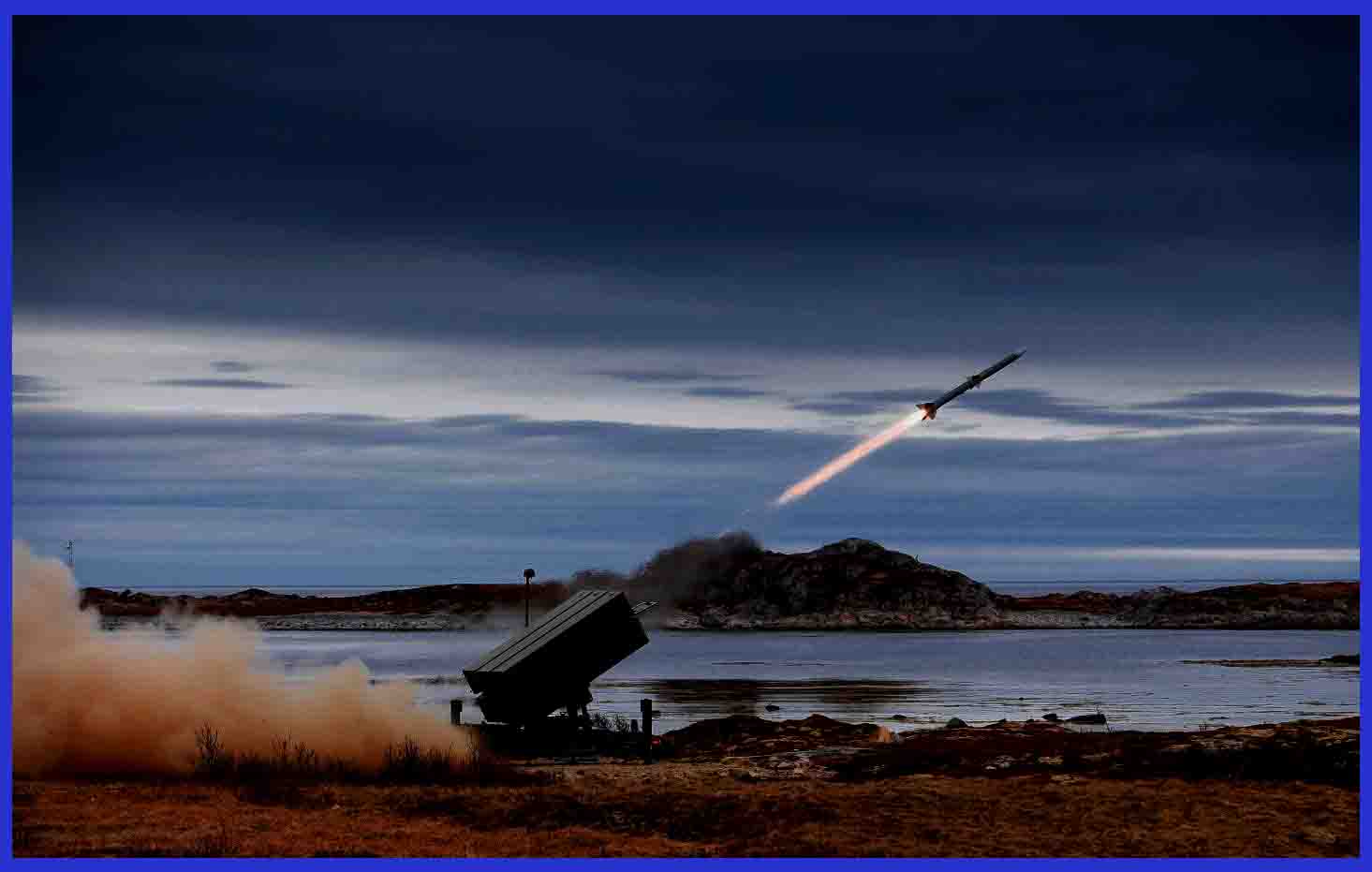
Specifications of the NASAMS System
- Crew: Each Firing unit requires 2 person
- Engagement Range: 30 km ( NASAMS 2 / AMRAAM ) and 50 km ( NASAMS 3 / AMRAAM-ER )
- Radar track range: 120 km ( NASAMS 2 / MPQ-64F1 )
- Missile Types: AMRAAM / AMRAAM ER for longer ranges, Sidewinder and IRIS-T for shorter ranges.
- Flight altitude: NASAMS 2 covers a range of 21 km, while NASAMS 3/AMRAAM-ER extends to 35.7 km
- Radar System: AN/MPQ-64 Sentinel
- Mobility: Transportable launchers and associated equipment such as HMMWV-based (HML), and Sisu E13TP, also air-lifted by C-130 and C-17.
- Network-Centric Operations: Operates within a network-centric environment, allowing for seamless integration with other air defence assets and command and control systems.
- Interoperability: The system is designed to be interoperable with other air defence systems.
Furthermore, in addition to this article, seize the exclusive opportunity to acquire an exquisite large-scale 1/72 premium die-cast model of the formidable YF-4E Phantom II. These remarkable military fighter aircraft are available now on AirModels, embodying unparalleled craftsmanship and attention to detail. Don’t hesitate to secure these exceptional models before the limited stock runs out.
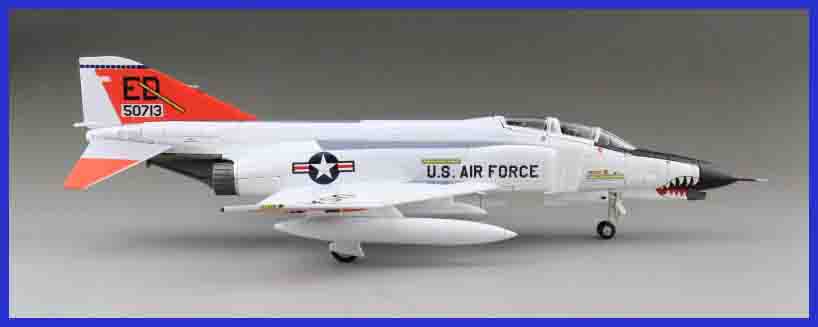
In conclusion, the National Advanced Surface-to-Air Missile System (NASAMS) stands as a formidable and adaptable air defence solution, known for its range of advanced capabilities. With the ability to engage a wide array of aerial threats, its modular design, network-centric operations, and mobility have made it a go-to choice for nations seeking to protect critical assets and territories.
NASAMS continues to evolve, with updates and improvements keeping it at the forefront of air defence technology. Whether defending against aircraft, helicopters, drones, or cruise missiles, NASAMS has proven its effectiveness on the battlefield.
Its interoperability with other air defence systems and its role in joint and multinational operations underscore its importance in modern defence strategies. NASAMS not only provides security but also adaptability in a rapidly changing threat landscape.
As it enters new generations and configurations, NASAMS remains a symbol of cutting-edge air defence, offering nations the assurance they need in safeguarding their airspace and interests against a wide spectrum of airborne threats.
Important Announcement for Our Valued Readers!
After an article is published, it is possible that updates or changes may have occurred beyond the time of publication. Therefore, it is important to be aware that certain information in the article might be outdated. To ensure the most accurate analysis, it is highly recommended to verify the content with the latest sources available.
However, we are dedicated to delivering outstanding articles on military products and global updates. Maintaining quality and smooth operation requires resources. Your support sustains our efforts in providing insightful content. By purchasing high-quality products through our affiliated links, you help us keep our platform alive and acquire top-notch items. Your unwavering support is invaluable and inspires us to strive further.
We welcome your suggestions and requests for more information, as we value feedback from our readers. If there’s specific defence material or equipment not covered on our site, please share your request in the comments. We’ll strive to research and provide the required information. We sincerely thank you for your unwavering interest in our website, and we eagerly anticipate hearing from you! Enjoy your reading experience!
